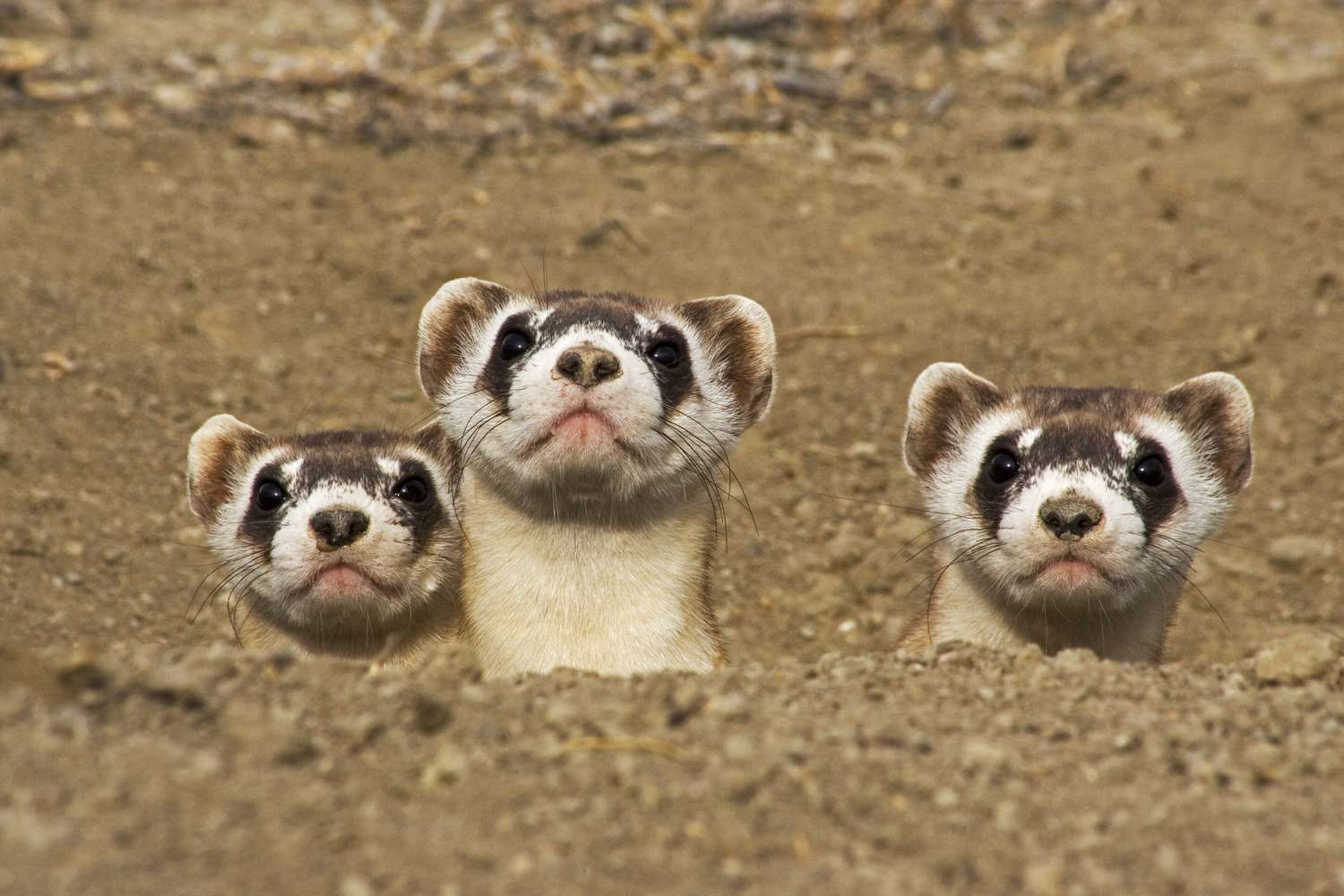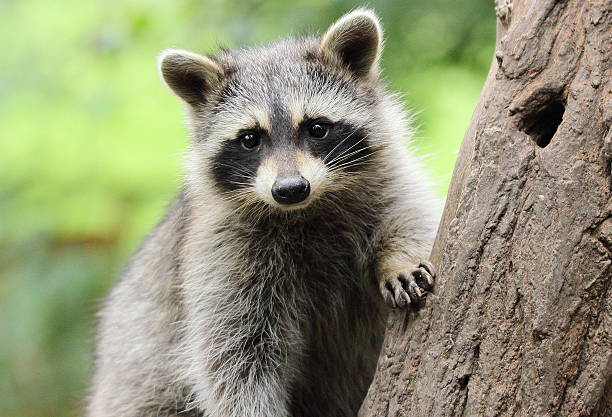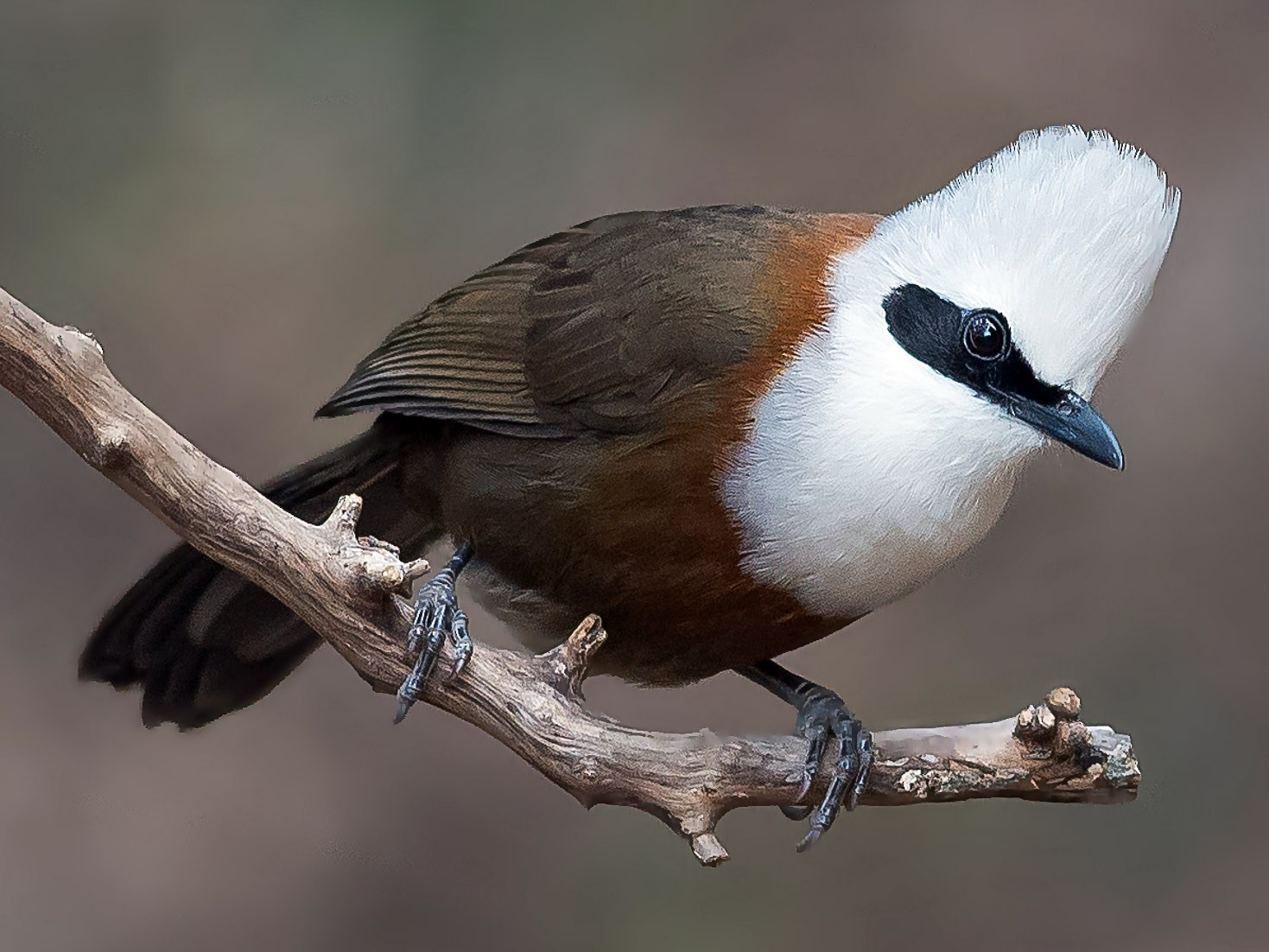Masks are not just for humans, as many animals have masks around their eyes that help them blend into their environment, protect them from predators, or help them hunt for prey. These masks can be bold or subtle, and they add to the unique appearance of these animals.
In this article, we will explore the top 10 animals with masks around their eyes. From the well-known raccoon to the lesser-known masked flowerpiercer, we will take a closer look at these fascinating creatures and learn more about their distinctive features.
You are reading: Top 10 Animals With Masks Around Their Eyes

Top 10 Animals With Masks Around Their Eyes
Raccoon

Raccoons are one of the most well-known animals with a mask around their eyes. The black mask around their eyes is their most noticeable marking, extending from the edge of the nose to the lower part of the cheek. In addition, raccoons have whitish patches on top of the eyes and around the nose.
Raccoons have grayish-brown fur over most of their body, and their tails have four to six black rings. The mask on their face is dark brown/black with white.
The infamous masked bandit is known for its cleverness, its mischievous personality, and, yes, the black mask around its eyes. However, raccoon eyes can also refer to dark purple or blue bruises under human eyes, which resemble the dark circles under a raccoon’s eyes.
White-crested laughing thrush

The White-crested laughing thrush is a highly social and vocal bird found in forest and scrub from the Himalayan foothills to Southeast Asia. Here are some interesting facts about the White-crested laughing thrush:
– The scientific name Garrulax leucolophus comes from Latin garrire “to chatter”, in reference to its very vocal nature, and from Greek leukós “white” and lophos “crest”.
– White-crested laughing thrushes are social birds, usually in flocks of 6-12 individuals (but reportedly up to 40) . These small parties can be very noisy as a leader initiates a call (typically with short syllables such as ow, u’ow or u’ah) and is answered with a chorus, in sometimes disorderly fashion.
– The name “laughingthrush” comes from the “loud cackling outbursts” they produce, often followed by a quieter, more pleasant chatter or muttering (kerWICKerWICK or nYUKoop nYUKoop) .
– Flocks travel through primary forest, second growth, and gardens, giving loud, querulous, and jabbering calls as they forage.
– White-crested laughing thrushes start reproducing in their second year. They breed several times between February and September. Nests are shallow and cup-shaped, in shrubs and trees at heights between 2-6 meters above the ground.
The White-crested laughing thrush is a fascinating bird with a distinctive mask around its eyes, and its vocal nature and social behavior make it a joy to observe in the wild.
Boobies
Read more : 13 Types Of Molly Fish With Pictures
Boobies are seabirds that have distinctive masks around their eyes. Here are some interesting facts about boobies:
– Boobies are a type of seabird that belong to the Sulidae family.
– There are six species of boobies, including the blue-footed booby, the red-footed booby, and the masked booby.
– Boobies are known for their distinctive masks around their eyes, which are black or dark brown and help to reduce glare from the sun while they are hunting for fish.
– Boobies are excellent divers and can plunge into the water from heights of up to 80 feet to catch fish.
– Boobies are found in tropical and subtropical regions around the world, including the Galapagos Islands, the Caribbean, and the Gulf of Mexico.
Boobies are fascinating seabirds with distinctive masks around their eyes that help them hunt for fish in the bright sunlight.
Spectacled owl
The Spectacled Owl (Pulsatrix perspicillata) is a large tropical owl native to the neotropics, found in forests from southern Mexico and Trinidad, through Central America, south to southern Brazil, Paraguay, and northwestern Argentina. Here are some interesting facts about the Spectacled Owl:
– The Spectacled Owl is named after the distinctive white “spectacles” around its bright yellow eyes, which make it nearly impossible to confuse with any other owl species throughout most of its range.
– Apart from its “spectacles,” the Spectacled Owl has a dark brown head and facial disk, a white throat, and a dark “bib” along its upper breast. Its breast and belly are a buffy color with a tinge of yellowish-brown.
– Spectacled Owls are medium-sized to large owls, with males weighing 453 to 680 g and females weighing 680 to 906 g. They are 43 to 46 cm long, with a wingspan of 0.762 to 0.914 m.
– Spectacled Owls are important members of their ecosystem, as they likely have a regulatory influence on insect and mammal populations, and they are an important food source for their predators.
– Spectacled Owls eat small mammals, insects, spiders, caterpillars, bats, birds up to the size of jays, crabs, and frogs.
– Spectacled Owls nest in tree hollows and lay 1-2 eggs, which are incubated by the female for about 5 weeks. Chicks leave the nest for surrounding branches at about 5-6 weeks, well before they can fly, but depend on their parents for food for several more weeks.
The Spectacled Owl is a fascinating bird with a distinctive mask around its eyes, and its role in its ecosystem makes it an important species to study and protect.
Black-footed ferret
The Black-footed Ferret, also known as the American polecat or prairie dog hunter, is a species of mustelid native to central North America. Here are some interesting facts about the Black-footed Ferret:
– The Black-footed Ferret is roughly the size of a mink and is similar in appearance to the European polecat and the Asian steppe polecat.
– The Black-footed Ferret has a long, slender body with black outlines on its paws, ears, parts of its face, and its tail. The forehead is arched and broad, and the muzzle is short. It has few whiskers, and its ears are triangular, short, erect, and broad at the base. The neck is long, and the legs are short and stout. The toes are armed with sharp, very slightly arched claws. The feet on both surfaces are covered in hair, even to the soles, thus concealing the claws.
– The Black-footed Ferret is largely nocturnal and solitary, except when breeding or raising litters. It is most active above ground from dusk to midnight and 4 am to mid-morning. Aboveground activity is limited to periods of low light intensity.
– Up to 90% of the Black-footed Ferret’s diet is composed of prairie dogs, and it is primarily nocturnal and hunts for sleeping prairie dogs in their burrows.
– The Black-footed Ferret was thought to be extinct until 1981 when it was rediscovered in Wyoming. It is one of North America’s most endangered mammals, and concerted efforts by numerous partners have given Black-footed Ferrets a second chance for survival. Captive breeding, reintroductions, habitat protection, and cloning have helped restore them to over 300 animals in the wild.
– Black-footed Ferrets spend about 90% of their time underground, where they eat, sleep, and raise their young in prairie dog burrows. Black-footed Ferret young, called kits, are born blind and helpless and stay below ground until they are about two months old. At two months old, the female begins to take her young on hunting forays and separates the kits into different burrows. By around five or six months old, the young are completely independent and will disperse to their territories.
The Black-footed Ferret is a fascinating animal with a distinctive mask around its eyes, and its nocturnal and solitary behavior make it a challenging animal to observe in the wild.
Masked flowerpiercer
The Masked Flowerpiercer (Diglossa cyanea) is a species of bird in the tanager family, Thraupidae, found in humid montane forest and scrub in Venezuela, Colombia, Ecuador, Peru, and Bolivia. Here are some interesting facts about the Masked Flowerpiercer:
– The Masked Flowerpiercer is named after the dark mask around its eyes, which contrasts with its deep ultramarine blue feathers.
– The Masked Flowerpiercer has a large, black, and upturned beak with a characteristic hook on the tip of the upper mandible, which it uses to slice open the base of flowers to get at the nectar.
– The Masked Flowerpiercer grows to a length of about 15 cm (6 in), and the adult male is deep ultramarine blue with a dark mask, while the female is similar in appearance but altogether duller.
– The Masked Flowerpiercer is endemic to the Andes in South America, where its range extends from Venezuela and Colombia, through Ecuador and Peru to Bolivia.
– The Masked Flowerpiercer is quite common and widespread in the Andes from Venezuela to Bolivia, usually above 2,000 m, and feeds on fruit, nectar, and insects.
– The Masked Flowerpiercer is an important pollinator of high-altitude plants, and its foraging behavior helps to maintain the biodiversity of the Andean ecosystem.
The Masked Flowerpiercer is a fascinating bird with a distinctive mask around its eyes, and its role in pollination and maintaining the biodiversity of the Andean ecosystem makes it an important species to study and protect.
Eurasian penduline tit
The Eurasian Penduline Tit (Remiz pendulinus) is a small passerine bird that is relatively widespread throughout the western Palearctic. Here are some interesting facts about the Eurasian Penduline Tit:
– The Eurasian Penduline Tit is a small bird, measuring only 10-11 cm in length and weighing between 8-12.5 g.
– The male Eurasian Penduline Tit has a black mask around its eyes, while the female has a brownish mask.
– The Eurasian Penduline Tit is known for its distinctive pouch-shaped nests, which it builds hanging from trees, usually over water.
– The Eurasian Penduline Tit usually feeds on insects and spiders, but it will also eat seeds, such as those from the willow (Salix).
– The Eurasian Penduline Tit is migratory in the northern part of its range but resident in the southern part.
– The Eurasian Penduline Tit is estimated to have a population of 420,000-840,000 individuals in Europe alone.
The Eurasian Penduline Tit is a fascinating bird with a distinctive mask around its eyes, and its unique nesting behavior makes it an interesting species to study.
Maned sloth
Read more : 7 Types Of Aphids
The Maned Sloth (Bradypus torquatus) is a three-toed sloth that is native to South America. Here are some interesting facts about the Maned Sloth:
– The Maned Sloth is one of four species of three-toed sloths belonging to the suborder Xenarthra and are placental mammals.
– The Maned Sloth is listed as Vulnerable (VU) according to the IUCN Red List and has a decreasing population trend.
– The Maned Sloth is found only in the Atlantic coastal rainforest of southeastern and northeastern Brazil, and it is an endemic species unique to Espírito Santo, Rio de Janeiro, and Bahia.
– The largest number of individuals that inhabit the same space within the species currently occupy the state of Bahia, which is also the location for the largest number of genetically diverse Maned Sloths.
– Individual Maned Sloths have been reported to travel over a home range of 0.5 to 6 hectares (1.2 to 14.8 acres), with estimated population densities of 0.1 to 1.25 per hectare (0.04 to 0.51/acre).
– The Maned Sloth is typically found in wet tropical forests with very hot and humid climates that have a very minimal dry season with an annual rainfall of at least 1,500 mm (59 in).
– Maned Sloths breed between September and November, near the end of the dry season and the beginning of the wet season, and have one offspring at a time.
– The Maned Sloth is an incredible mammal that spends most of its life in the branches of trees, and it is an important species for the Bahia Coastal Forests ecoregion, located in the Brazilian Atlantic Moist Forests bioregion.
The Maned Sloth is a fascinating animal with a distinctive mask around its eyes, and its unique habitat and behavior make it an important species to study and protect.
Slender loris
The Slender Loris is a small, nocturnal primate that is native to India and Sri Lanka. Here are some interesting facts about the Slender Loris:
– The Slender Loris is a genus of loris that comprises two species, the red slender loris found in Sri Lanka and the gray slender loris from Sri Lanka and India.
– Slender Lorises spend most of their life in trees, traveling along the tops of branches with slow and precise movements. They are found in tropical rainforests, scrub forests, semi-deciduous forests, and swamps.
– Slender Lorises are one of the most faunivorous primates, with the red slender loris observed eating animal prey while the gray slender loris is primarily carnivorous (mostly insects) but will also eat bird eggs, berries, leaves, buds, and occasionally invertebrates as well as geckos and lizards.
– Slender Lorises are nocturnal and have a highly developed sense of smell, which they use to locate insect prey in the dark. They also feed on plant material, including young leaves, shoots, flowers, and fruit with hard rinds.
– Slender Lorises are solitary, nocturnal foragers who are active throughout the night. During the day, they sleep curled up in a ball in hollow trees or in the branches of trees.
– The Slender Loris is an endangered species, with habitat destruction being a major threat. They are widely trapped and killed for use in supposed remedies for eye diseases and are preyed upon by snakes, dogs, and some fish. Other threats include electrocution on live wires, road accidents, and capture for the pet trade.
– Conservation efforts are underway to protect the Slender Loris, with the red slender loris identified as one of the top-10 “focal species” in 2007 by the Evolutionarily Distinct and Globally Endangered (EDGE) project.
The Slender Loris is a fascinating primate with a distinctive mask around its eyes, and its nocturnal behavior and endangered status make it an important species to study and protect.
Spectacled monarch
The Spectacled Monarch (Symposiachrus trivirgatus) is a species of bird in the Monarchidae family. Here are some interesting facts about the Spectacled Monarch:
– The Spectacled Monarch is found in Australia, Indonesia, and Papua New Guinea, with its natural habitats being subtropical or tropical moist lowland forests and subtropical or tropical mangrove forests.
– This bird species was originally placed in the genus Drymophila and subsequently in Monarcha until it was moved to Symposiachrus in 2009.
– The Spectacled Monarch is a small songbird with a modestly long tail and a slim, short bill. It has a rich dark gray coloration above, pale below, a black mask and chin, and a rich rufous-orange throat.
– The black face mask of the Spectacled Monarch extends across both eyes in a ‘clover-leaf’ pattern, giving it its distinctive appearance.
– There are currently six recognized subspecies of the Spectacled Monarch, including S. t. trivirgatus, S. t. bernsteinii, and S. t. albiventris, each found in different regions of its range.
– The Spectacled Monarch has a very large range, and its population size does not approach the thresholds for Vulnerable status under the range size criterion.
– This bird species is not considered globally threatened, but its conservation status may vary in different regions due to habitat loss and other local threats.
The Spectacled Monarch is a fascinating bird with a distinctive mask around its eyes, and its range and habitat make it an important species to study and protect.
FAQS
1. What is the purpose of the mask around the eyes of these animals?
The mask around the eyes of these animals can serve different purposes, such as helping them blend into their environment, protect them from predators, or help them hunt for prey.
2. What are some of the animals with masks around their eyes?
Some of the animals with masks around their eyes include the raccoon, white-crested laughing thrush, boobies, spectacled owl, black-footed ferret, masked flowerpiercer, Eurasian penduline tit, maned sloth, slender loris, and spectacled monarch.
3. Where are these animals found?
These animals are found in different parts of the world, such as North America, South America, Australia, Europe, and Asia.
4. Are these animals endangered?
Some of these animals are endangered, such as the black-footed ferret and the slender loris, while others are not considered globally threatened.
5. What is being done to protect these animals?
Conservation efforts are underway to protect these animals, such as captive breeding, reintroductions, habitat protection, and cloning.
Source: https://petstutorial.com
Category: Animals










